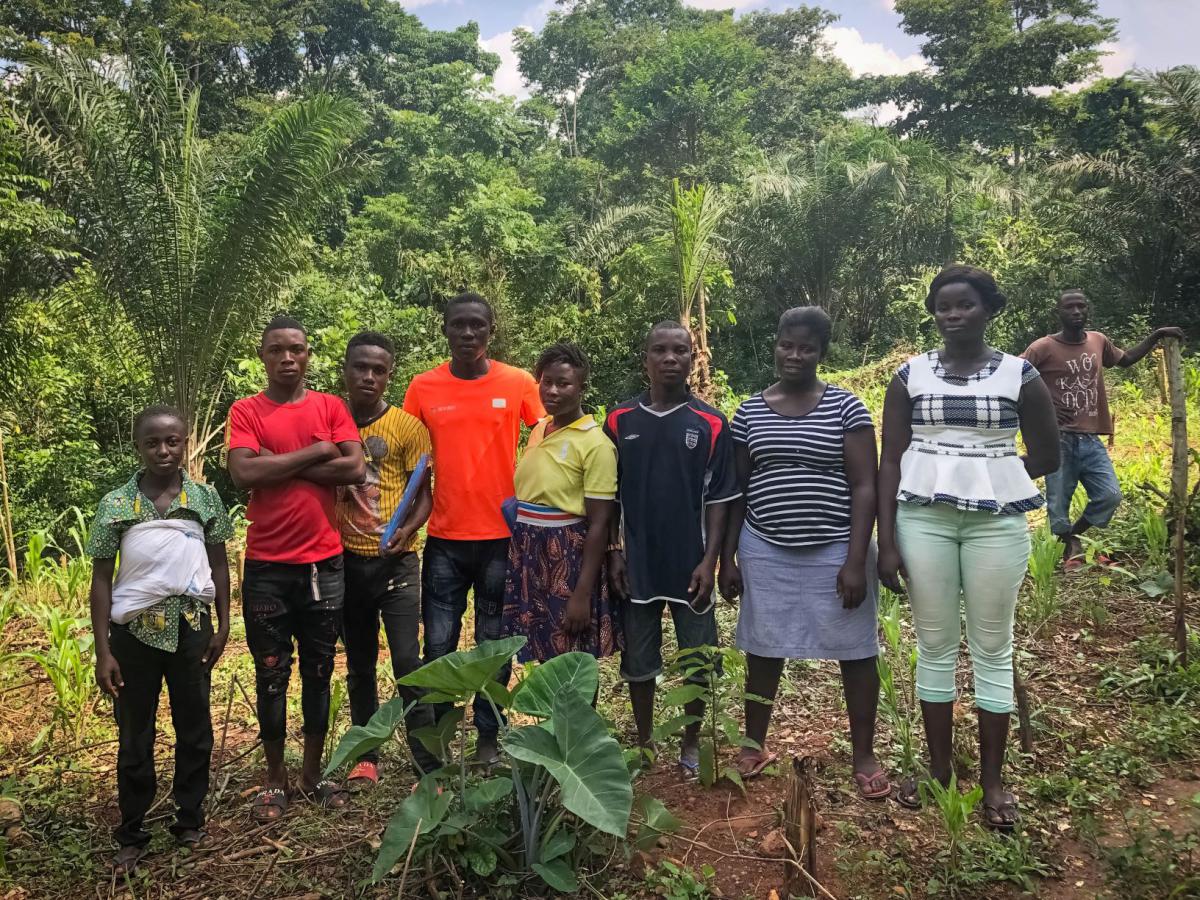
A group of MASO students with their cocoa seedlings
In the village of Assin Nkukuasa, about a 5 hour bumpy drive from Ghana’s capital city, young community members have gathered for their biweekly course in the MASO Cocoa Academy. They are here to learn about cocoa agronomy. Most of them have some familiarity with cocoa due to family members owning some trees, or to prior work they have done on cocoa farms themselves. Nevertheless, they all share with us that they are excited about the chance to really learn the specifics about cocoa in order to grow more bountiful crops, and to better understand how to structure a good business plan.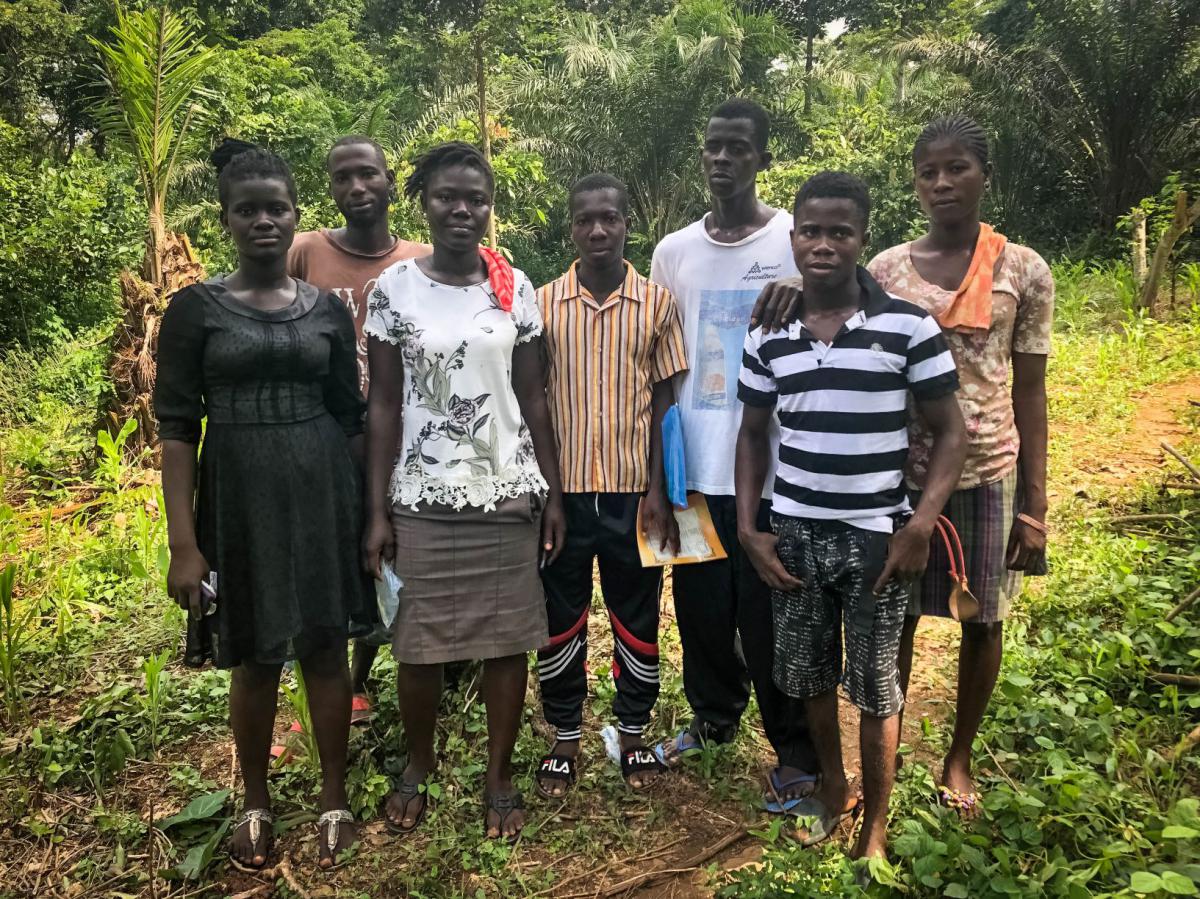
The students at the model farm plot
Combining school, family and work
Although the majority of young people gathered in the church, which has been lent for class sessions, are between 18 and 30 years of age, there are a handful of attendees under the age of 5. Play mats and toys are in the back of the room so nursing mothers and parents of young children can still attend the class. As a working adult, often with a family of your own, it can be hard to find the time to go to class. However, the set up of the Cocoa Academy accommodates the needs of the students. For instance, one young woman in the front row nurses her baby during a discussion on transplanting seedlings. And in classrooms with a large number of youngsters, childcare is provided by the programme.
The group decided among themselves on the best time of day to hold the classes (they settled on 3pm), but some still struggle to fit in attendance alongside their work, home, and other caring responsibilities. However, in general their families are very supportive of the students’ participation in the Cocoa Academy, which really helps them make it work to participate. One young woman tells us how she has her own hair braiding business and sometimes she gets so involved with a client that she loses track of time, but her husband always reminds her when it is time to leave for class.

A classroom used for Cocoa Academy lessons
Building a valuable skill set
After the lecture, we head out of the classroom on a 10 minute walk through the town and forest to the model farm. Toddlers are sitting on the shoulders of their parents and one particularly small baby is swaddled onto his mother’s back. On our way, we pass through the primary school most of the MASO participants have attended.
A number of the Cocoa Academy students were not able to continue their education beyond primary school. And whilst the main aim of the MASO programme is to educate students on cocoa agronomy, the coursework also covers basic business skills as well as life skills such as confidence building and leadership.
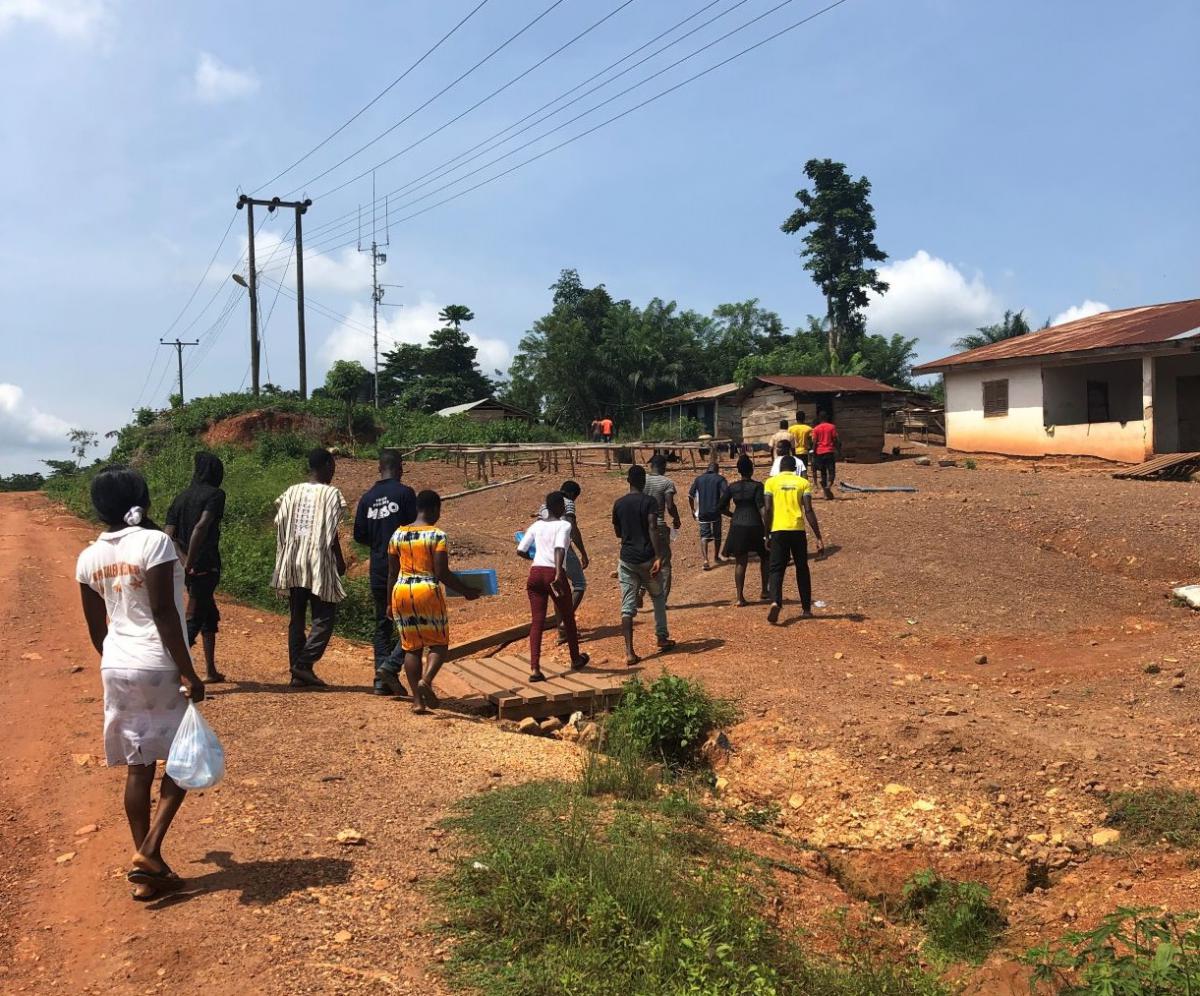
Walking through the schoolyard to the model farm
Hands-on learning at a model farm plot
The heat is oppressive, even though it’s the cooler rainy season. Under the shade trees, however, the air is fresh and there is the earthy smell of cocoa trees. As part of their course at the Cocoa Academy, students learn that shade trees are important for more than just our comfort while we walk through the jungle: shade trees are an important aspect of sustainable cocoa farming. They protect against erosion and the impact of heavy rains, contribute to biodiversity and improve productivity.
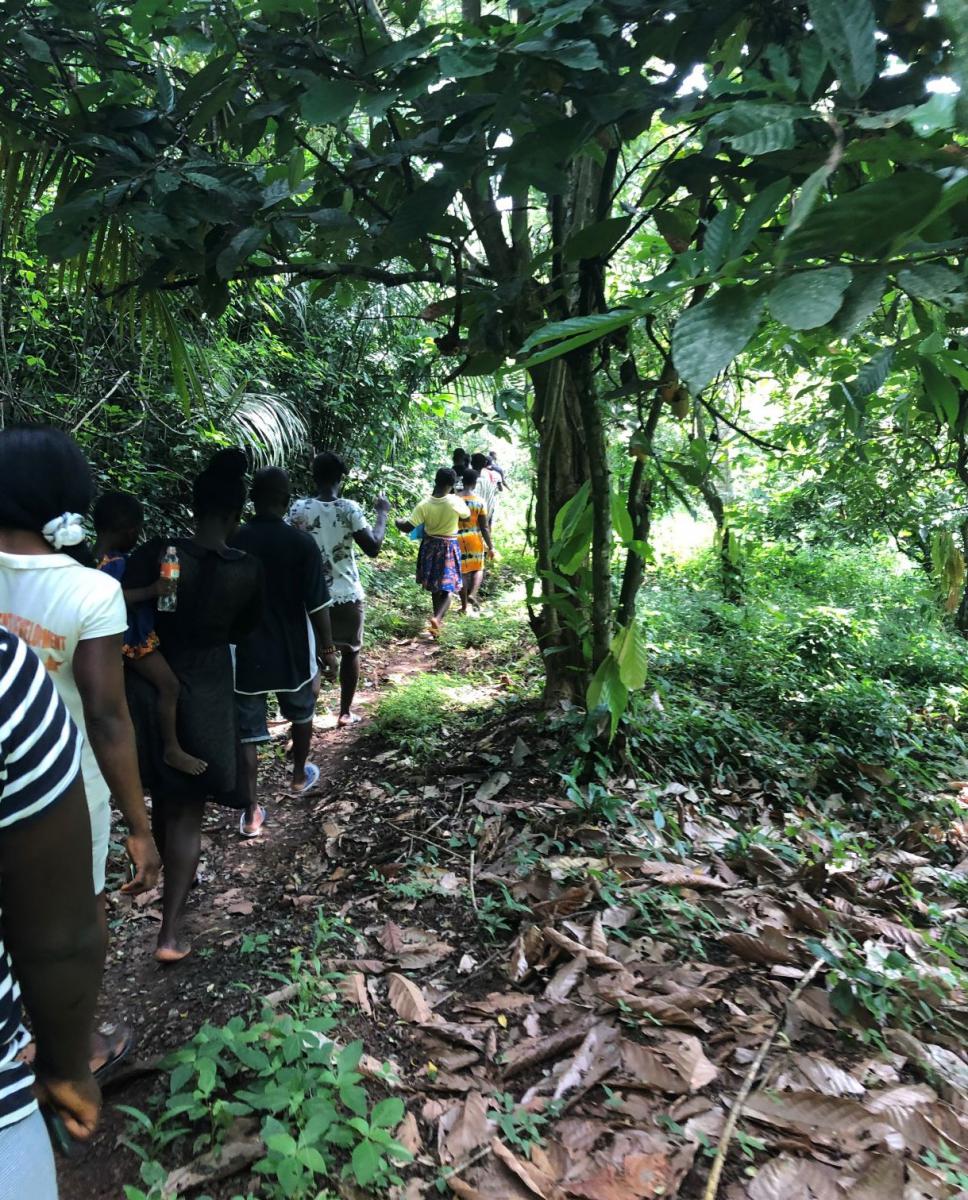
Walking through the forest among shade and cocoa trees
Emerging from the trees we come to a freshly planted one-acre area. The Cocoa Academy is split between classroom lectures and hands-on learning at a model farm plot. Here the students proudly show off the cocoa seedlings they planted a few weeks earlier. Their classroom work mirrors the agricultural cycle, so these seedlings were planted while the students were learning about planting. According to this same cycle, the seedlings will be pruned while students study pruning, and fertilized during the lecture on fertilization, and so on.
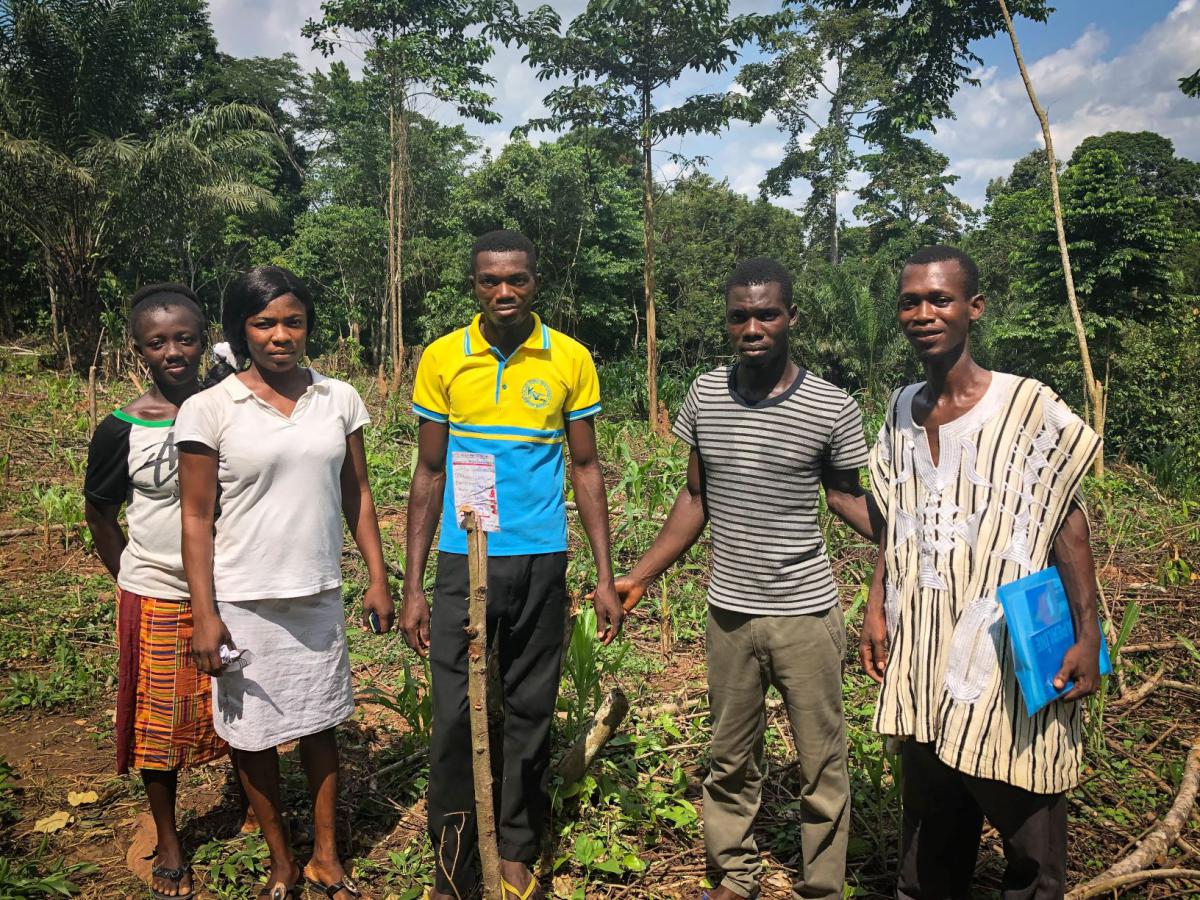
The students with their seedlings at the model farm plot
The seedlings are planted in neat rows, about 3 metres apart. Interspersed between the seedlings are young maize and plantain plants. Intercropping, the practice of planting other crops between the seedlings, has a lot of benefits for the cocoa plants and for the farmers. Similar to shade trees, their presence contributes to biodiversity. Intercropping with food crops provides the farmers an extra source of food for their families, or a secondary source of income if they sell the maize or plantains at the market.
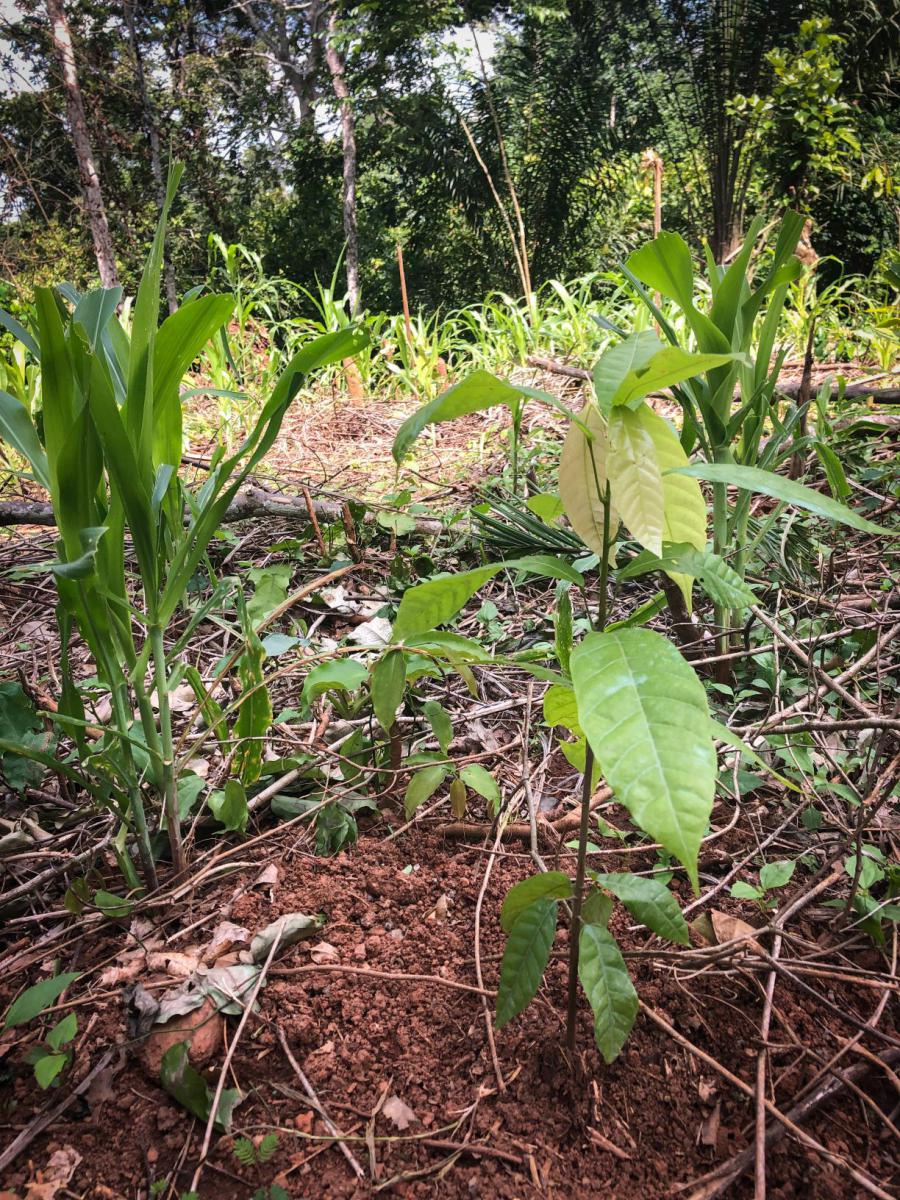
Cocoa seedling with young maize behind it (intercropping)
The tips and tricks for cocoa planting
As each group of students shows off their rows of seedlings, they tell us a few important tips they used when planting. You should dig the hole first, one student advises us, and then use UV light and fertilizer to prepare the ground a day or so in advance of transplanting the seedling. Another student explains that the size of the hole and the spacing depends on many factors, including the maturity of the seedling. One student gives us the spacing measurements in both imperial and metric, explaining that the course taught him how to use the metric system. All of the students point to nibbled leaf tips and stress the impact of the nighttime visits by neighbourhood goats.
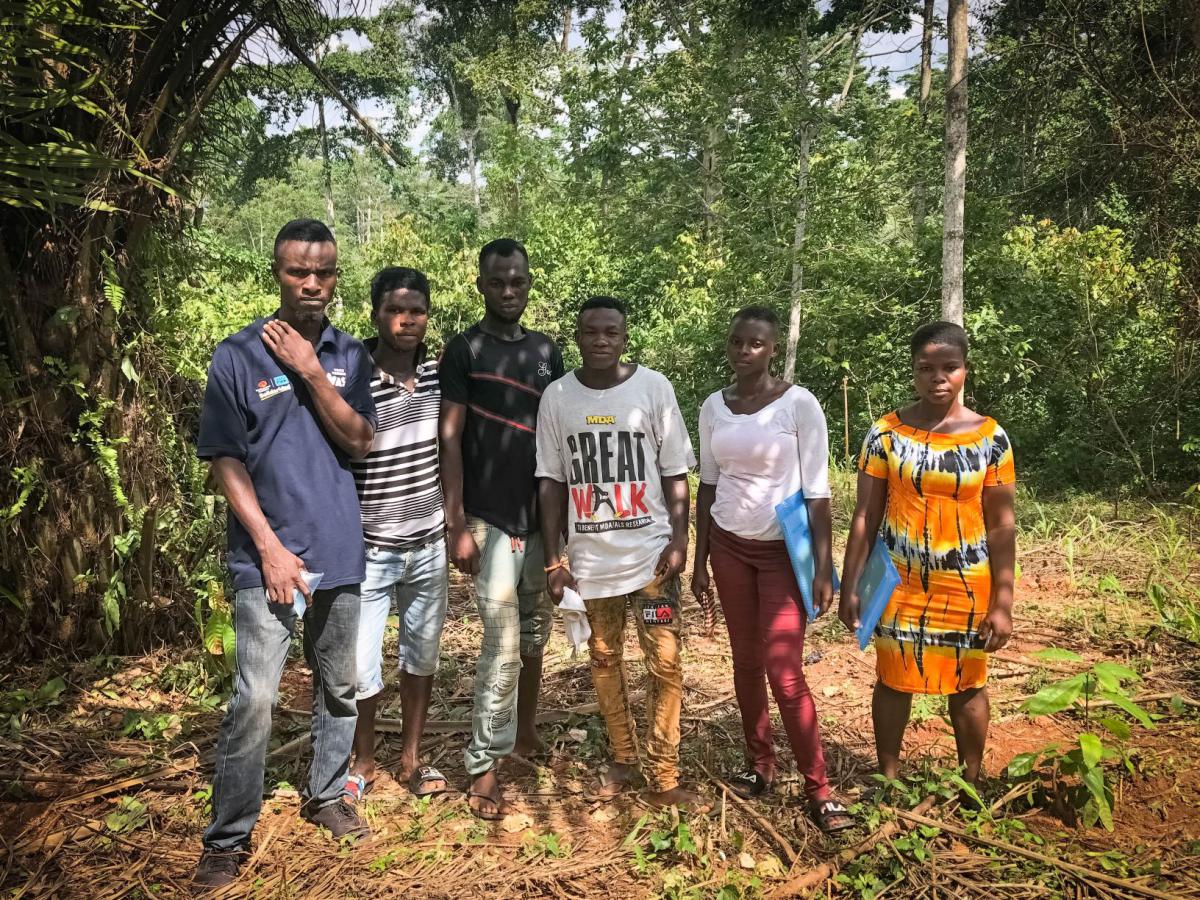
The students with their seedlings at the model farm plot
The challenge ahead
The small trees planted by these students will take five years to reach maturity. Until then, the students will not be able to make an income yet off of the cocoa they have planted. This is the major challenge facing aspiring young cocoa farmers in Ghana: they are not able to access financial capital if they cannot pay back a loan for five years. No bank is willing to service a loan for such a long time here, and even if they were, five years of capitalized interest (at the currently high interest rate) would likely add up to more than the proceeds from that first harvest.
Solidaridad is looking into viable solutions to this issue of limited financial opportunities for young farmers, such as the MASO students. Among our current initiatives, we are working together with partners on the launch of our crowdfunding platform PlusPlus; more information on this initiative is still to follow.
One of the graduates of the MASO Academy is Mawuse, a 26-year-old cocoa farmer and entrepreneur who now owns her own plot of land. Read more about her story here.
Find out more about Solidaridad’s work in cocoa.
